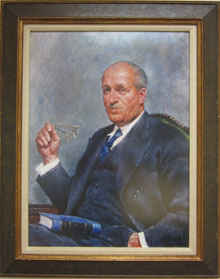On June 29, 2011, the last remnant of what was once Columbia House — the mightiest mail-order record club company that ever existed — quietly shuttered for good. Other defunct facets of the 20th-century music business have been properly eulogized, but it seems that nary a tear was shed for the record club. Perhaps no one noticed its demise. After all, by the end, Columbia House was no longer Columbia House; it had folded into its main competitor and become an online-only entity years before.A more likely explanation, though, is that a new generation of music fans who had never known a world without the Internet couldn't grasp the marvel that was the record club in its heyday. From roughly 1955 until 2000, getting music for free meant taping a penny to a paper card and mailing it off for 12 free records — along with membership and the promise of future purchasing.
The allure of the record club was simple: you put almost nothing down, signed a simple piece of paper, picked out some records, and voila! — a stack of vinyl arrived at your doorstep. By 1963, Columbia House was the flagship of the record-club armada, with 24 million records shipped. By 1994, they had shipped more than a billion records, accounted for 15 percent of all CD sales, and had become a $500-million-a-year behemoth that employed thousands at its Terre Haute, Indiana, manufacturing and shipping facility.
>> VIDEOS: Vintage Columbia House Record Club Ads from the '70s and '90s <<
Of course, most of the record clubs' two million customers failed to read the fine print, obligating them to purchase a certain number of monthly selections at exorbitant prices and even more exorbitant shipping costs. At the same time, consumers plotted to sign up multiple accounts under assumed names, in order to keep getting those 12-for-a-penny deals as often as possible. Record clubs may have introduced several generations of America's youth to the concept of collection agencies — and the concept of stealing music, decades before the advent of the Internet.

BY THE BOOK The Columbia House legacy can be traced back to Harry Scherman, and his Book of the Month Club. |
THE PROMISES MEN LIVE BYThe architects of the record-club concept were two men named Maxwell Sackheim and Harry Scherman, who in 1926 had come up with a little thing they called the Book of the Month Club. The genius of the book club wasn't just the idea of selling books through the mail, thus penetrating untapped rural markets; Sackheim and Scherman's real prize was devising what would come to be known as "negative option billing." This meant that instead of waiting for people to actually order books by mail, the club would send you books every month, unless you expressly told them not to. The concept presumes that a lack of response was a "yes." It was wildly successful. By the 1950s, the Book of the Month Club was a multimillion-dollar business.